Don’t know how to use HARO for link building?
Link building improves the visibility of your website. HARO (Help a Reporter Out) is one of the popular link-building techniques among SEOs.
HARO connects journalists with bloggers and industry experts. Bloggers can gain backlinks and improve site search performance.
In this blog post, we will explore the strategies and best practices on how to use HARO for link building.
What is HARO?

HARO stands for Help a Reporter Out. It is an online platform that connects journalists and bloggers. The bloggers help them as sources for their stories.
Founded by Peter Shankman in 2008. HARO has grown into a robust network with a vast number of reporters and experts.
The platform acts as a bridge between reporters and credible sources or individuals. This way, they gain media exposure by providing valuable insights and quotes.
How Does HARO Work?

HARO operates on a simple principle. That is to connect reporters and experts. They do it using queries and pitches.
Reporters post queries or requests for information. It relates to the topics they are covering. They distribute these queries to the HARO subscriber base via email.
Subscribers review the queries and respond if they can offer relevant information.
If a reporter selects a response. He will cite the source in the published article, along with a backlink to their website.
The Benefits of Using HARO for Link Building
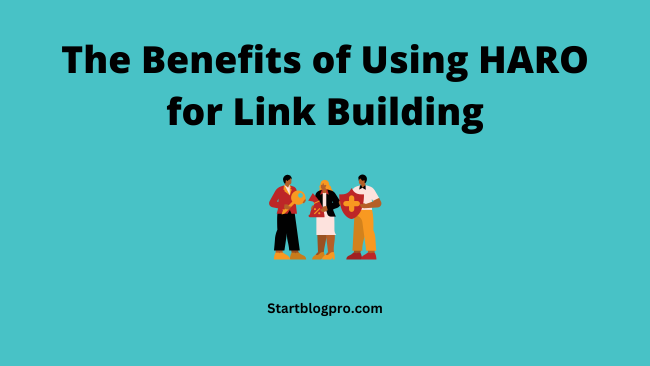
Using HARO for link building improves the visibility and authority of your website. A few key advantages are:
Quality Backlinks
HARO provides an opportunity to secure high-quality backlinks. That too from reputable publications and websites. So it enhances your website’s SEO performance.
Enhanced Credibility
By featuring your ability and insights in authoritative publications. You can prove yourself as a credible source in your industry.
Increased Traffic
As your website gains exposure through backlinks. You’ll get a surge in organic traffic from the readers and potential customers.
Networking Opportunities
HARO connects you with journalists, bloggers, and influencers in your niche. This opens the door for future collaborations and partnerships.
Brand Exposure
Citations in relevant articles and publications increase brand visibility. It improves awareness among your target audience.
Content Generation
With HARO queries. You gain valuable content insights and ideas that resonate with your audience.
How to Get Started with HARO?
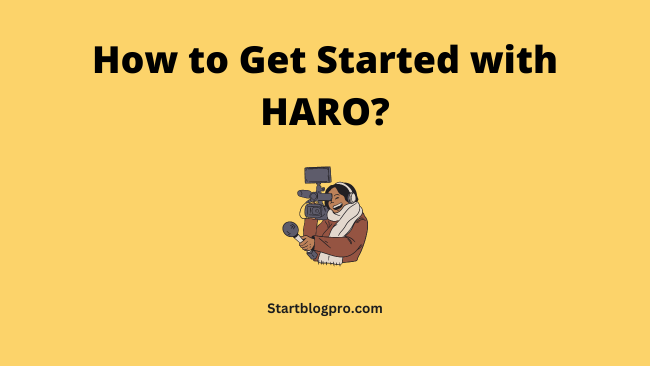
To use HARO for link building, follow these steps:
Sign up for HARO: Visit the HARO website and sign up as a source. Give the right information on your ability and areas of interest.
Select Relevant Categories
HARO lets you choose categories that align with your industry or niche. This step ensures you receive queries related to your field of expertise.
Check HARO Emails
HARO sends out emails thrice a day with queries from journalists. Check these emails and find queries that match your expertise.
Craft Your Response
When responding to a query, be concise, specific, and provide value. Tailor your response to address the reporter’s needs and showcase your expertise.
Submit Your Response
Send your response via email to the reporter or publication mentioned in the query. Use a professional tone and ensure your contact information is accessible.
Follow Up
If you don’t receive a response within a reasonable timeframe. Send a polite follow-up email to inquire about the status of your submission.
How To Craft a Compelling HARO Pitch?

When crafting your HARO pitch, keep the following tips in mind:
Be Relevant
Relate your pitch to the query and provide valuable insights or information useful for the reporter’s use.
Keep it Concise
Journalists receive many pitches. So keep yours brief and to the point. Highlight your expertise and why you are a suitable source for their story.
Show Personality
Inject your pitch with your unique voice and personality to make it memorable. Avoid sounding formal or robotic.
Use Examples and Data
Support your pitch with relevant examples, statistics, or case studies. It strengthens your credibility and provides evidence for your claims.
Include Contact Information
Make it easy for the reporter to reach out to you. Your contact information should be clear and accurate. It should include your email and phone number.
How to Follow Up HARO Queries?
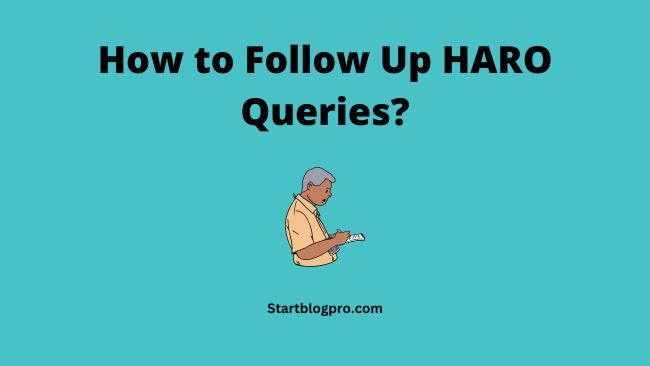
Follow-up of HARO submissions can improve your chances of getting featured in an article. Here are some tips for effective follow-up:
Be Patient
Journalists are often busy. So give them enough time to review and respond to your submission before following up.
Send a Polite Reminder
If you haven’t received a response after a reasonable time. Send a friendly follow-up email to check the status of your submission.
Provide Extra Information
Use your follow-up email to provide extra information or insights. This will further convince the journalist to include you as a source.
Maintain Professionalism
Always maintain a professional and courteous tone in your follow-up communication. Avoid being pushy or aggressive.
How to Evaluate HARO Opportunities?

All HARO opportunities are not equal. It’s important to check each query. Ensure it aligns with your goals and objectives. Consider the following factors when assessing HARO opportunities:
Relevance
Determine if the query relates to your expertise. It should align with your brand’s values and industry focus.
Authority
Check the authority and credibility of the publication or reporter issuing the query. Consider their reputation and target audience.
Backlink Potential
Assess the potential for securing a backlink from the publication or website. Look for opportunities that provide a contextual and relevant backlink.
Timeframe
Consider the timeline provided in the query. Determine if you can meet the deadline and provide the required information within the specified timeframe.
How to Use HARO for Authority Building?
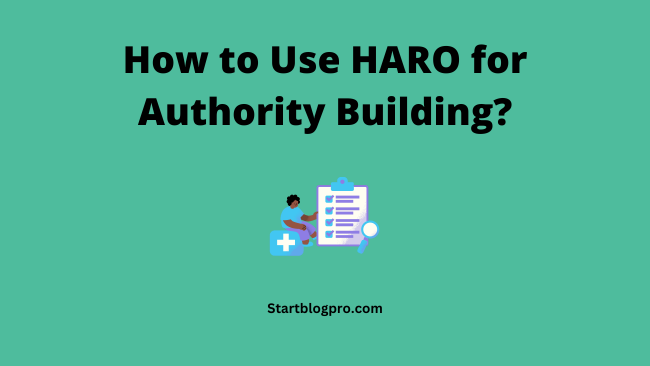
Using HARO strategically can help you build authority and establish yourself as an industry expert. Here’s how you can leverage HARO for authority building:
Choose Relevant Queries
Focus on queries that relate to your expertise. They should showcase your knowledge and insights.
Provide Value
When responding to queries, offer valuable and actionable information. This sets you apart as an authoritative source in your industry.
Consistency is Key
Engage with HARO queries to maintain a consistent presence. It increases your chances of getting featured in articles.
Follow up on Published Articles
Once your response gets featured in an article. Reach out to the journalist and express your gratitude. This helps build a long-term relationship and leads to future collaboration opportunities.
How to Build Relationships Through HARO?

HARO not only helps you build backlinks and gain exposure. But also allows you to establish meaningful relationships with journalists and industry experts. Here are some tips for building relationships through HARO:
Be Professional and Responsive
Always respond promptly and professionally to journalists’ queries. Build a reputation for being reliable and a pleasure to work with.
Personalize Your Responses
Tailor your responses to match the style and tone of the journalist or publication. Show that you’ve done your research and are genuinely interested in their work.
Express Gratitude
When your response gets featured, send a thank-you note to the journalist. Express your appreciation for the opportunity and offer your help for future projects.
Follow Journalists on Social Media
Connect with journalists on social media platforms like Twitter and LinkedIn. Engage with their content, share their articles, and build rapport.
Attend Industry Events
HARO connections lead to invitations to industry events and conferences. Take advantage of these opportunities to network with journalists and fellow experts.
Common Mistakes to Avoid When Using HARO
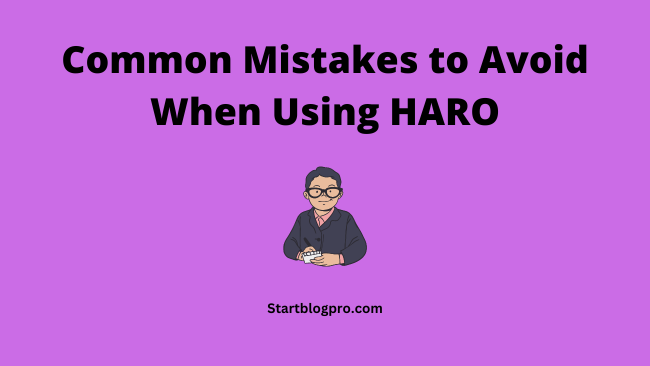
While HARO can be a valuable tool for link building. It’s essential to avoid common mistakes that can hinder your success. Here are some pitfalls to avoid:
Irrelevant Responses
Don’t respond to queries that don’t relate to your expertise or industry. Irrelevant responses waste the journalist’s time and can harm your reputation.
Generic or Promotional Pitches
Avoid sending generic or promotional pitches. Journalists are looking for valuable insights, not self-promotion.
Poor Grammar and Spelling
Ensure your responses are well-written, free of grammar mistakes, and easy to read. They will disregard poorly written responses.
Lack of Follow-up
Following up is crucial. Don’t miss the opportunity to remind journalists about your submission. Provide any extra information they may need.
Ignoring Deadlines
Respect the deadlines provided in the queries. Failing to submit your response on time shows a lack of professionalism. This may cause missed opportunities.
Neglecting to Thank Journalists
Always express gratitude to journalists who feature your response. Failing to acknowledge their efforts can damage potential relationships.
How to Track Your HARO Success?
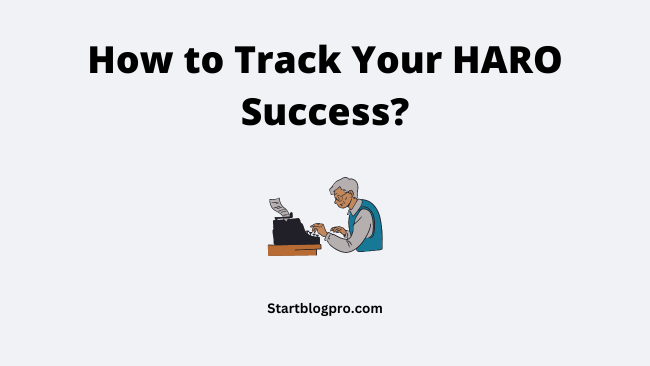
Tracking your HARO success helps find out the effectiveness of your link-building efforts. Here’s how you can track your HARO success:
Backlink Analysis
Check your backlinks using tools like Google Search Console or third-party SEO tools. Keep track of the HARO backlinks and their impact on your website’s SEO performance.
Website Traffic
Analyze your website traffic to identify any spikes or increases in traffic after getting featured in articles. HARO-driven backlinks can lead to significant traffic boosts.
Mentions and Brand Awareness
Track online mentions of your brand or website. It lets you find articles or publications where your response is included. This helps measure the reach and brand exposure achieved through HARO.
Media Relationships
Keep a record of the journalists and reporters you’ve established relationships with through HARO. Engage with them and explore opportunities for future collaborations.
Conversion Tracking
If your goal is to drive conversions or sales. Track the conversion rate and customer acquisition from the traffic generated by HARO backlinks.
FAQs
Yes, HARO caters to a wide range of industries and niches. There are queries available for almost every field. So it is a versatile platform for link building.
The time to see results from HARO can vary. It depends on various factors. Such as the quality of your responses, the competition in your industry, and the publication’s editorial process. Be patient and consistent in your efforts.
Not all HARO opportunities may be worth pursuing. Check each query and focus on those that align with your goals, target audience, and brand values.
Yes, HARO can be beneficial for local SEO. By getting backlinks from local publications or websites. You improve your website’s visibility in local search results.
While it’s tempting to respond to every query. It’s essential to focus on and choose the ones that align with your expertise and goals. Quality over quantity is key.
Yes, there are alternative platforms like HARO, such as SourceBottle and ProfNet. These platforms provide similar opportunities for connecting with journalists and securing backlinks.
Conclusion
Using HARO for link building can be a game-changer for your website’s SEO performance.
By using the strategies and best practices in this guide. You can use HARO to secure valuable backlinks and establish your authority. It helps you build meaningful relationships with journalists and industry experts.
Use the opportunities that HARO presents and watch your website soar in search engine rankings. I hope you now know how to use HARO for link building.
Let me know what are your thoughts and experience on HARO link building.

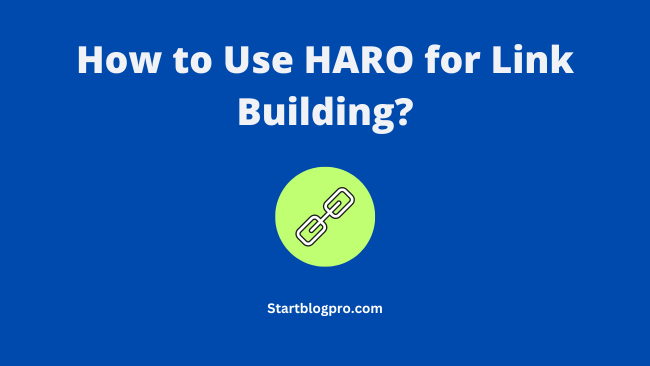
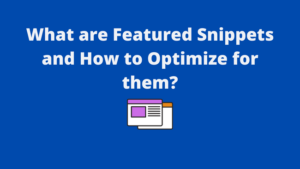
![Read more about the article How to Create a WordPress Sitemap for Beginners [2023]](https://startblogpro.com/wp-content/uploads/2022/09/how-to-create-a-wordpress-sitemap-300x169.png)

HARO (Help a Reporter Out) is indeed a popular link-building technique among SEOs. It connects journalists with bloggers and industry experts, allowing bloggers to gain backlinks and improve their website’s search performance. To use HARO for link building, you can follow these steps:
Sign up for HARO on their website and provide accurate information about your expertise and areas of interest.
Select relevant categories that align with your industry or niche to receive queries related to your field of expertise.
Regularly check the HARO emails you receive, usually three times a day, to find queries that match your expertise.
When responding to a query, be concise, specific, and provide value. Tailor your response to address the reporter’s needs and showcase your expertise.
Submit your response via email to the reporter or publication mentioned in the query. Use a professional tone and ensure your contact information is accessible.
If you don’t receive a response within a reasonable timeframe, consider sending a polite follow-up email to inquire about the status of your submission.
To craft a compelling HARO pitch, remember to be relevant, concise, and show your personality. It’s also beneficial to use examples and data to support your pitch and include clear contact information for the reporter. Following up on HARO queries, evaluating HARO opportunities based on relevance, authority, backlink potential, and timeframe, and using HARO for authority building are additional strategies to enhance your link-building efforts.
Building relationships through HARO is crucial. Be professional and responsive in your communication, personalize your responses to match the journalist’s style, express gratitude when your response gets featured, and connect with journalists on social media or attend industry events to establish meaningful relationships.
When using HARO, it’s important to avoid mistakes such as providing irrelevant responses, sending generic or promotional pitches, having poor grammar and spelling, neglecting to follow up, ignoring deadlines, and failing to thank journalists. By tracking your HARO success through backlink analysis, website traffic, mentions and brand awareness, media relationships, and conversion tracking, you can assess the effectiveness of your link-building efforts.
HARO can be used for any niche or industry, and it can also help with local SEO by obtaining backlinks from local publications or websites. While not all HARO opportunities may be worth pursuing, it’s crucial to focus on the ones that align with your goals, target audience, and brand values. Additionally, there are alternative platforms like SourceBottle and ProfNet that provide similar opportunities for connecting with journalists and securing backlinks.
Overall, using HARO for link building can be a game-changer for your website’s SEO performance, helping you secure valuable backlinks, establish authority, and build relationships with industry experts.